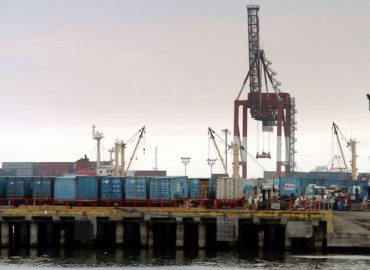By Luz Wendy T. Noble and Beatrice M. Laforga, March 30, 2020; Business World
https://www.bworldonline.com/phl-may-go-into-recession-diokno/
The Philippine economy could go into recession this year, central bank Governor Benjamin E. Diokno said on Sunday, as the coronavirus pandemic brings everything to a standstill.
“We’re looking at negative to maybe 1% [growth] given this development,” he told the ABS-CBN News Channel.
The global economy has now entered a recession — a period of economic decline where output falls for two successive quarters — that could be as bad or worse than the 2009 downturn, International Monetary Fund (IMF) Managing Director Kristalina Georgieva said on Friday.
Countries needed to boost spending as a safeguard against bankruptcies and possible market debt defaults, she told a news briefing.
“It is now clear that we have entered a recession as bad or worse than in 2009,” Ms. Georgieva said. “This is a very big crisis and it’s not going to be sorted out without a very massive deployment of resources.”
“Seems about right, but still to be collectively agreed by the economic team,” Socioeconomic Planning Secretary Ernesto M. Pernia said in a mobile phone message, referring to Mr. Diokno’s growth estimate.
Mr. Diokno said the economy might still grow by 3% in the first quarter because the Luzon-wide quarantine took effect in the last two weeks of March.
“The second quarter will probably be negative, the third quarter, maybe around negative also and then we start picking up by the fourth quarter,” the Bangko Sentral ng Pilipinas chief said.
Earlier, the National Economic and Development Authority said economic growth might be -0.6% to 4.3% this year. The government had originally targeted growth of 6.5-7.5% this year from 5.9% last year.
The central bank has cut its benchmark rate by 50 basis points (bps) and eased rules for banks. It is also buying P300 billion in government securities.
The Monetary Board also cut the reserve requirement ratio for universal and commercial lenders by 200 bps to 12% effective today.
The policy-setting body has authorized Mr. Diokno to slash the ratio by as much as 400 bps this year amid the pandemic.
Before the outbreak, Mr. Diokno pledged to bring down the ratio to a single digit by the end of his term in 2023. That could happen sooner given the situation, he said.
“If necessary, we are willing to cut it to 10%,” Mr. Diokno said.
Last week, it remitted in advance P20 billion in dividends to the National Government to help it deal with the health crisis even if it is not required anymore under the New Central Bank Act.
Mr. Diokno said the government needs more stimulus on the fiscal side since monetary measures were not enough.
“We’ve done a lot on the monetary side,” he said. The government needs more fiscal measures “than what is done so far.”
President Rodrigo R. Duterte earlier signed into law a measure giving him special powers against the outbreak, including realigning as much as P275 billion in funds.
His economic team earlier announced a P27.1-billion package to help frontliners fight the coronavirus pandemic and provide economic relief to affected sectors.
Mr. Diokno said there was no need to borrow from the IMF because aid from the Asian Development Bank was enough.
INFLATION
Meanwhile, inflation could ease to 2.4% this month after oil prices dropped.
“Food prices are very stable, plus with the price freeze, I think we’re very comfortable,” he said. “Oil prices have come down below $30 per barrel from $85 per barrel so we’re okay with inflation,” he added.
Inflation in February slowed to 2.6% from 2.9% in January and 3.8% a year earlier due to lower food, transport and utility prices.
BSP this month lowered its 2020 inflation forecast to 2.2% from 3% and the 2021 forecast to 2.4% from 2.9%.
This brought the outlook for both years closer to the lower end of the central bank’s 2-4% target.

